Very interesting and educational.
Dairy Farming Basics: Classifying Cows
Like Noah’s Ark, cows walked by twos into the milking parlor holding area, which had been scattered with fresh wood shavings. But the cows weren’t here for milking. Twenty-two cows were gathered to be evaluated and scored on their essential cow-ness.
“I really like that udder,” says Jennifer Clark, the visiting classifier, eyeing the business end of one cow. “She’s got a good leg on her. She’s grown up a lot. 88.”
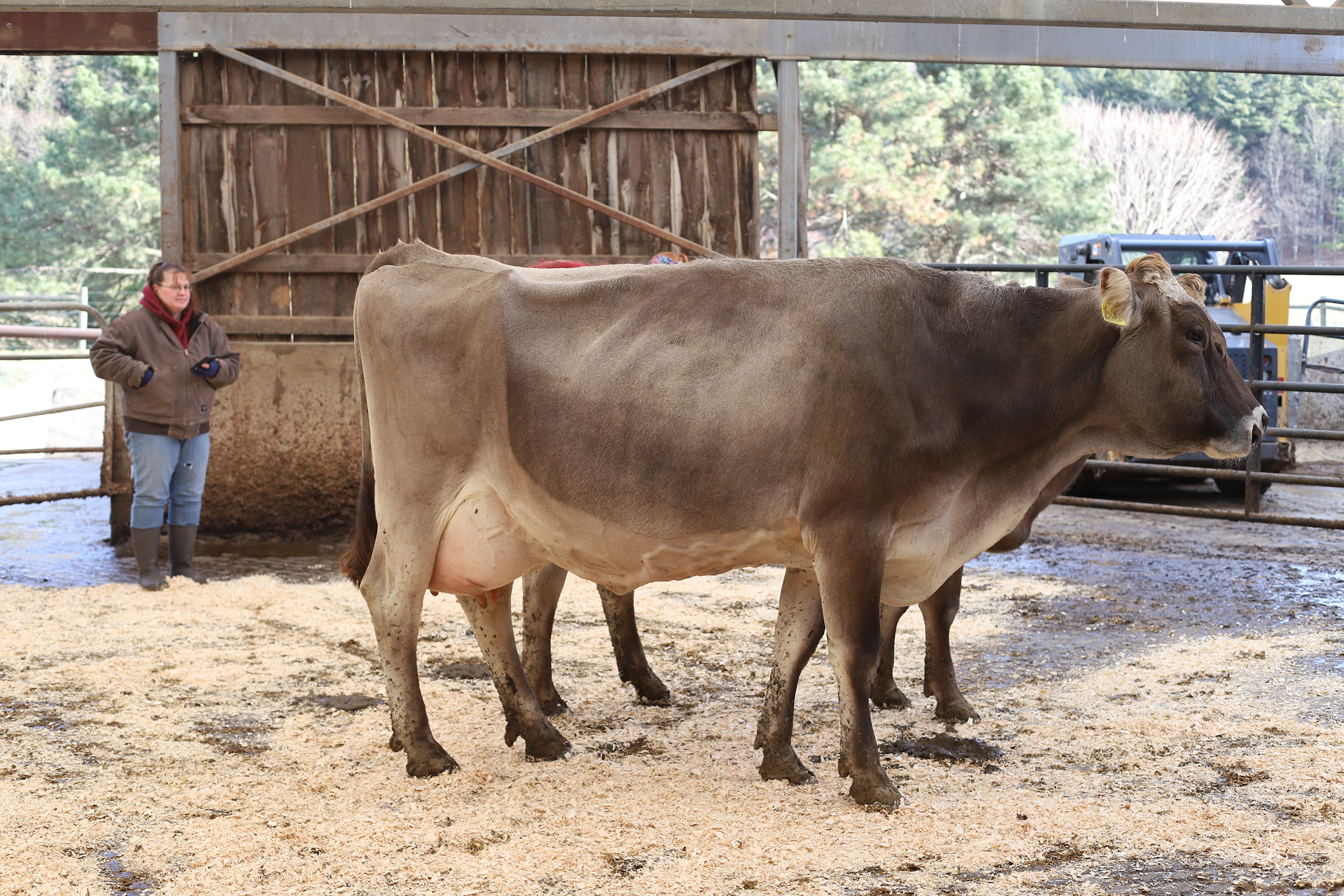
Dairy herd classification is an important part of caring for and improving a herd’s overall health and production. Each year, we’re required to score all the registered cows in our Brown Swiss herd against the ideal Brown Swiss cow. (Jennifer, who is based in Wisconsin, is a classifier for the Brown Swiss Cattle Breeders.)
“It’s good to get someone else's eye on the cows that we see every day,” explains Farm Manager Sam Dixon, “and by working with the crew from Brown Swiss we can see trends over time.”
As any 4-Her knows from their time in the show ring, a cow is judged in four categories: her frame, dairy strength, rear feet and legs, and the all-important udder. Since a cow’s job on a dairy farm is to produce milk, those attributes are indicators of how a cow will contribute to the herd’s milk production over time. (Solid legs and feet will also help a cow thrive in our pasture-based grazing system.)
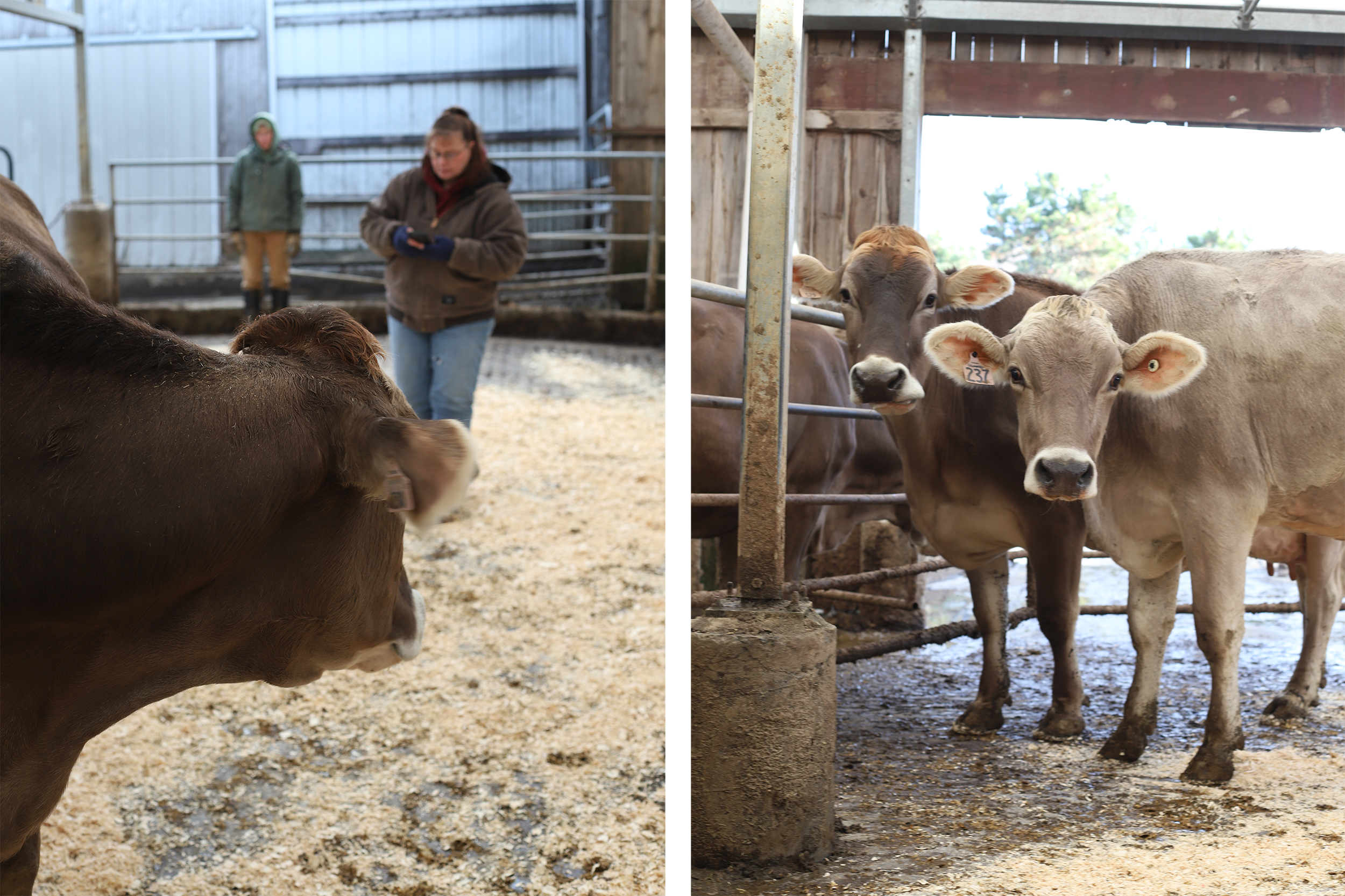
The classifying on this brisk winter day wasn’t for our full herd, though. It was a optional session to get baseline data on mostly younger cows with no score yet. To prepare, the team had spent three days, in between chores, closely shaving each cow’s hindquarters to better show off her… um…figure. They also decided to present the cows in pairs to keep them comfortable. As herd creatures, cows don’t like being alone.
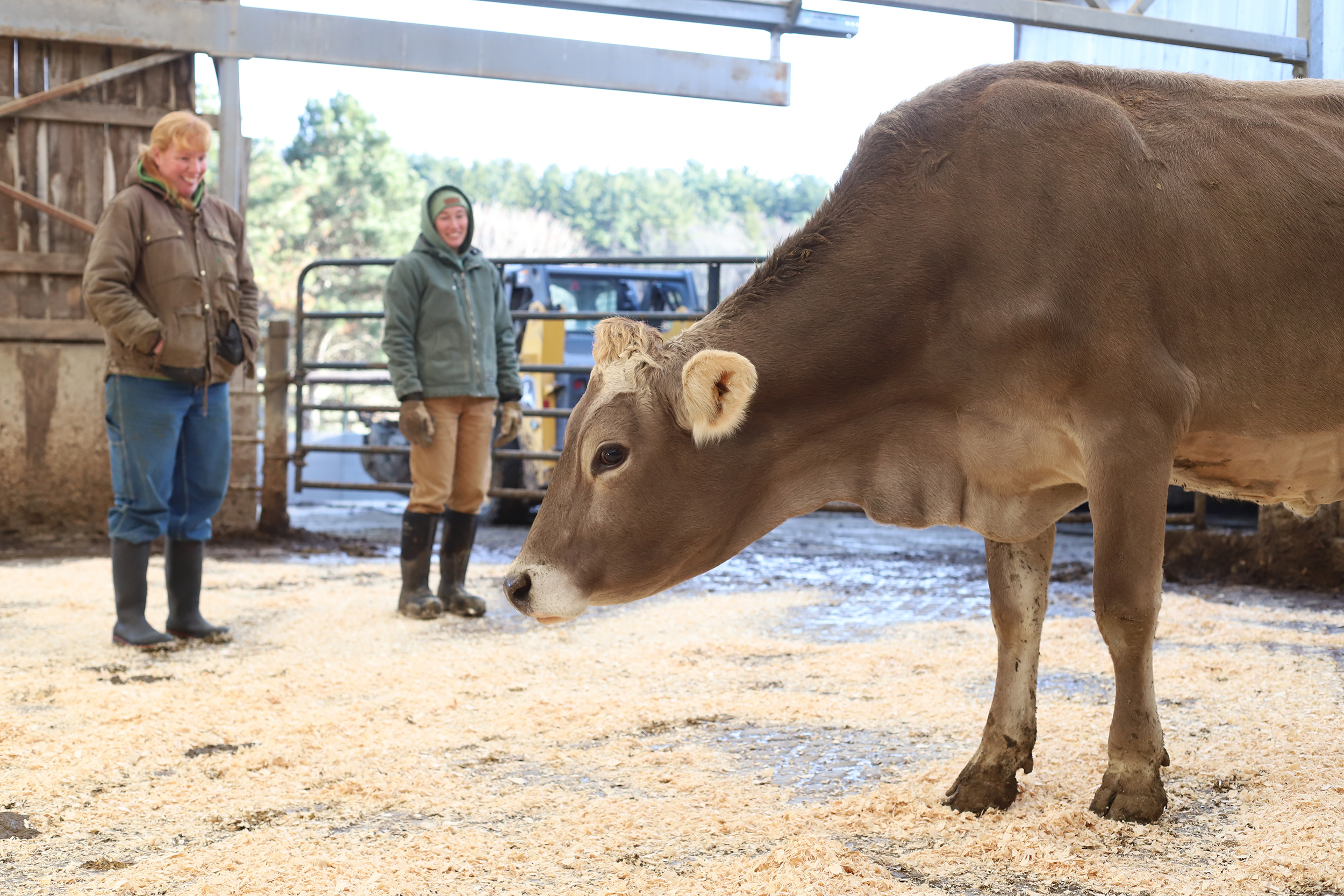
Jennifer circles another cow. “Needs a little more umph in her front end but really nice udder,” she says. “88”. A score of 85-89 is considered “very good;” above 90 is “excellent.” From her phone, Jennifer enters each cow’s scores directly into the online database that we have for all our cows.
What seems a bit like a beauty pageant really comes down to one word: genetics. A cow has to be bred each year in order to have a calf and produce milk. Each calf gives farmers a chance to shape future generations of the herd. For example, if a cow “Pauline” has weaker legs, we might breed her to a bull whose daughters are known for their strong legs, so Pauline’s daughters might be stronger.
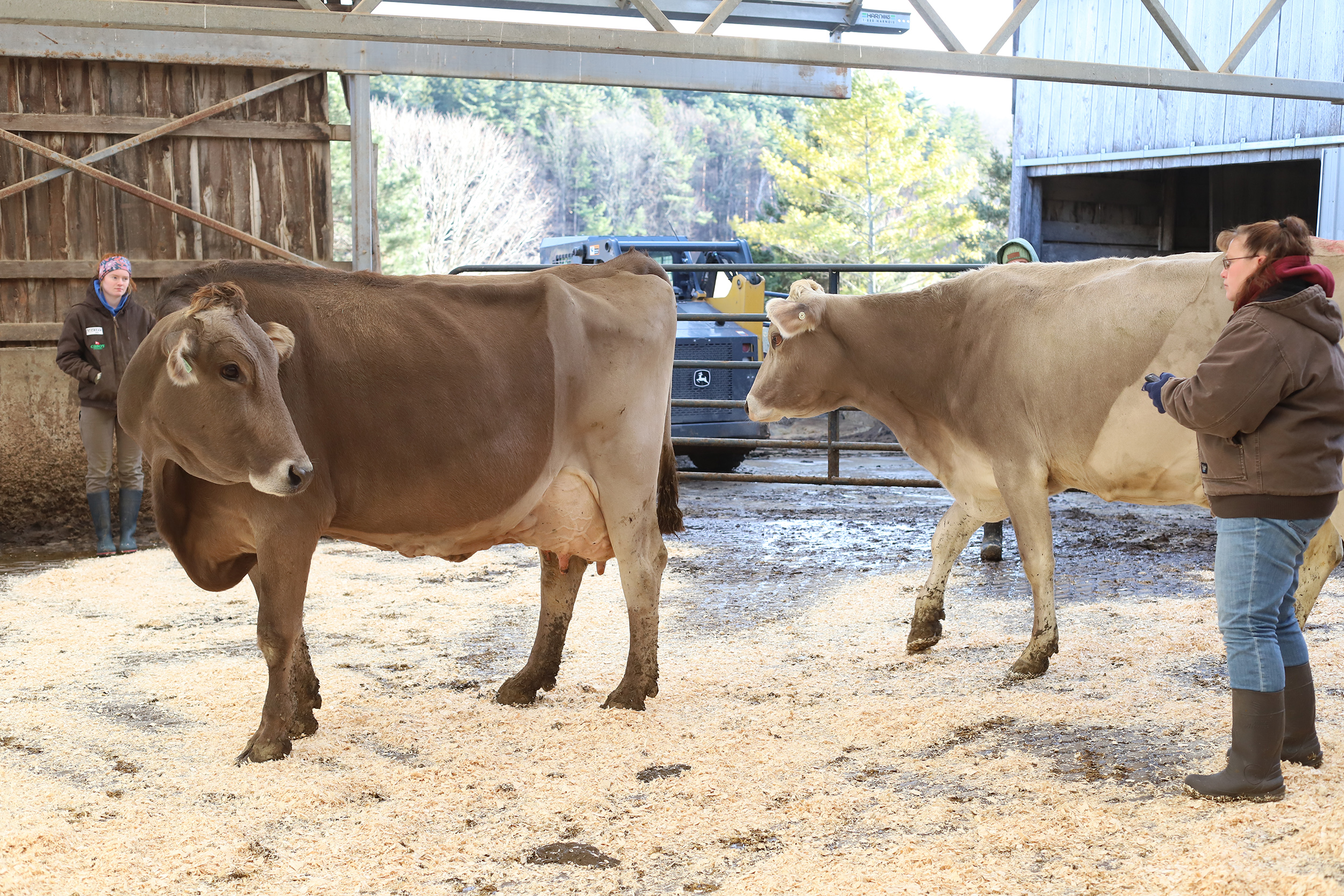
It’s not a perfect science by any means, but it is, in fact, an observable one. When Jennifer assesses one cow by saying, “She has a better than average daredevil rump,” she’s not making some odd comment about the cow’s caboose. She’s referring to that cow’s father, named Daredevil. Since most cows are artificially bred with semen ordered from Brown Swiss Bull catalogs, Jennifer has seen lots of daughters of Daredevil, and she can see “his” rump in our cow. It’s like having “your grandfather’s nose,” or “the height on your mom’s side.”
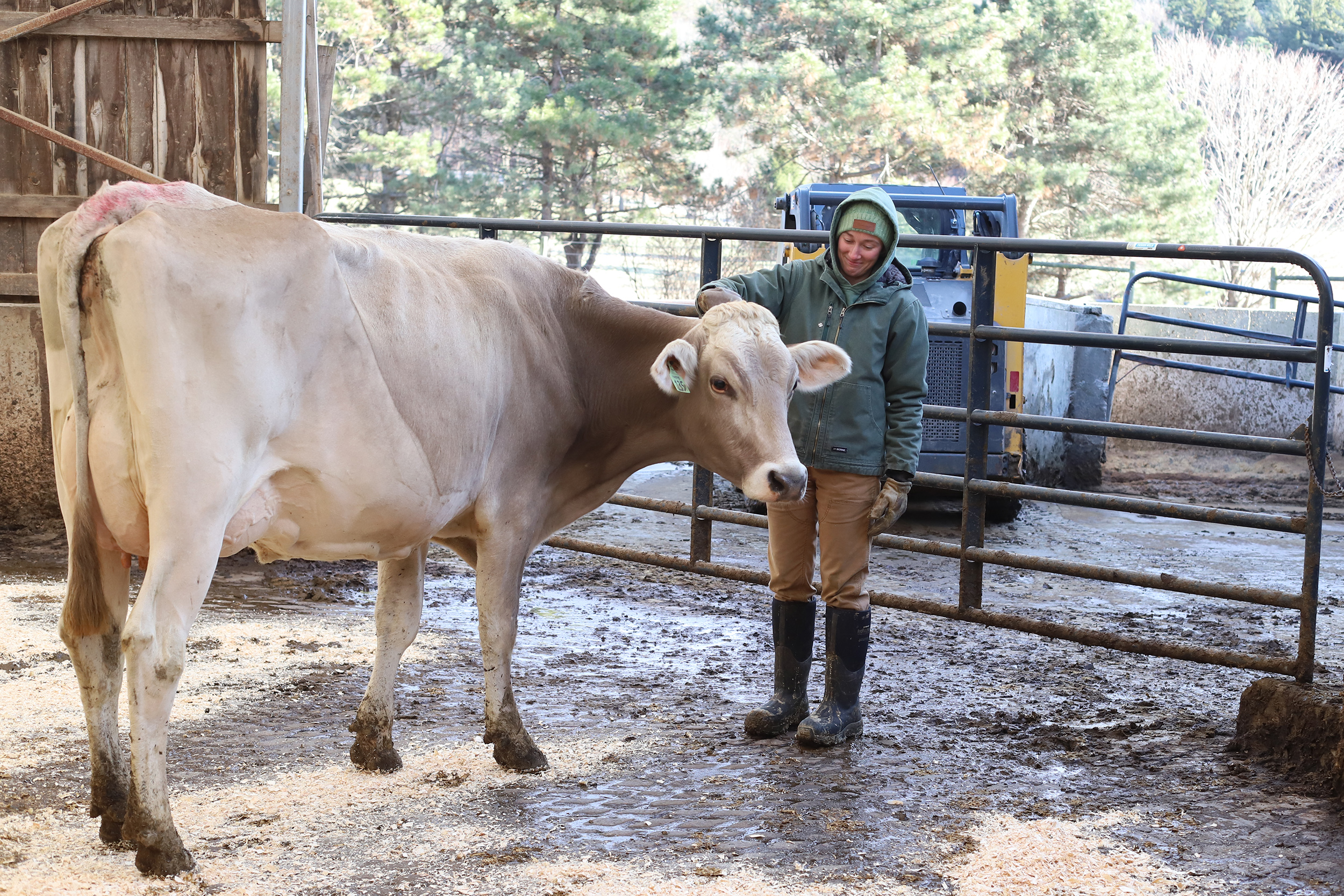
The whole classification process this afternoon takes a couple hours. The dairy team moves each pair of cows into the pen, Jennifer scores both cows in all the categories as they freely stroll the pen (cows are more typically put in stanchions for scoring), and then the team exits the cows to the barn.
In the end, dairy staffer Megan Letourneau calls it, “a great day.” One cow scored “excellent” (90), and eight cows earned “very good” scores. The rest slipped just below 85, but as Jennifer remarked often while assessing these mostly younger animals, “She’s a solid cow. She just needs to grow up a bit.” Under the care and attention of our dairy staff, they’ll do just that.
